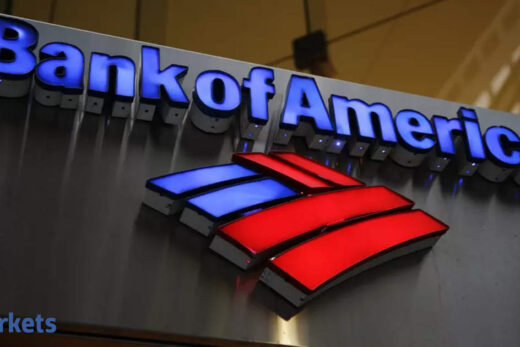ET Now: Commercial rural banking is a sizable business for HDFC Bank. The perception is that it has got hit because of the second wave. What is the reality?
Rahul Shukla: The reality is very different from what we talk about in TV news rooms. The mood on the ground is positive. This is a busy season for agricultural financing. Business for both farmers and us is robust.
The commercial vehicle & construction equipment business is going strong coming out of the pandemic. Credit utilisation by MSMEs is steadily increasing every month. Healthcare sector is currently fairly credit-strong. So we continue to expand our geographic footprint, extending credit in rural and semi-urban areas of the country and we see no credit challenges in finding new business.
Underlying each one of these trends is the visible hand of government policy. You have ECLGS. You have the scrappage policy which is coming into force from October. There are a variety of far-sighted agri schemes and the policy support for expansion of the healthcare segment in the non-metro areas.
The strength from the government has stabilised the sector, the economy as well as the banking system. That is being seen in the numbers that are coming out.
So you are confirming to us that there is a big difference between perception and reality, and that things for your business are looking up?
That is correct. Even in Kerala, there are 40% unoccupied COVID beds available; for ICU beds for COVID, the percentage availability is even higher. So during this wave we seem to be managing much better. Business momentum is pretty strong.
In my last conference call with investors, I had said that we had grown at 4% quarter on quarter growth. This was below what should be the natural growth rate for my businesses. I can tell you that we are progressing quite smoothly in terms of expansion of growth rate towards its natural trajectory as it settles down.
The markets are very open. We are blessed that we are a large country and a large market which is underpenetrated in credit. The policy-led transformation of agri and strong policy support for MSMEs will continue to allow banks to find high growth opportunities for a long time to come without any undue credit concerns.
Can we safely say that seasonality will kick in, and in Q2 and Q3 things will only start improving?
That is actually the case. Let me take one of the segments that we are pretty active on — transportation finance, where we finance trucks and construction equipment and tractors. The disbursements that we did in the month of June was 110% of May. May was shut down. So you can say that looks pretty high. The month of July was 40% higher than the month of June. August, which closed just about three days ago, was about 20-25% higher than July.
We are a large financer, so a lot of growth cannot be attributed to market share increase. A lot of that growth has to be attributed to underlying strong trends in terms of growth. That is the indicator that we are seeing in pretty much all of the businesses. I can go granularly in terms of data, but I just wanted to give you an overall sense. You can connect the dots.
What about the unsecured end of the rural business? Does that bother you?
The total agricultural lending in the country is Rs 15 lakh crore. Rs 5 lakh crore is secured and Rs 10 lakh crore is unsecured. People have to figure out a way to play in that particular segment. Today we operate in one lakh villages and in two years we would like to expand this to two lakh villages. That is a huge jump, but that is still only 30% of the market. At that point of time, we have to follow and also extend credit to the small and marginal farmers. When we expand, we will have to do so in a manner which is credit responsible.
There are different things happening in the rural economy. Today if you think that the rural segment will continue to remain the same as a sector and also for the banks in the next 10 years, nothing can be farther from the truth. The entire ecosystem is changing quite dramatically. You have a shift towards rural agri businesses which is the value addition businesses. You have village warehouses as well as the rural logistic systems that are coming up and you have the FPOs (farm producer organisations) which allow you to channel credit to the small and marginal farmer on an unsecured basis but on the back of robust cash flows. These organisations also allow the farmer to go out and get a little bit of better pricing in the marketplace.
The way the structures are evolving on the back of at least 25 different government schemes, it is possible today to go out and lend. If we have to sustainably grow, we have to push credit into the hinterland. If we push credit into the hinterland, we have to look at structures where we will be able to provide credit without creating an NPA book, because that will only increase my cost of lending. You have to price your products right.
So I am not worried in terms of the rural growth rate. In fact, this is a quarter where I think I am going to surprise myself at the amount of NPA recoveries. The next quarter will have the harvest income, so that is going to give a further uplift.
We do business on the basis that the common man is an honest man. You go out and push credit to MSME or in the rural segment, and by and large 99.99% of the people want to pay back their debt to the bank. They are also indebted to the bank because the bank has helped them grow and come out of the poverty cycle. So, this would be my very long answer to a very short question of yours.
Don’t you think that lending to MSMEs could expose you to credit risk, because they don’t have competitiveness?
The MSME sector, taking into account both bank credit as well as the non-banking finance space, is roughly about Rs 20 lakh crore. There are about 6.5 crore entities of which roughly about 1.5 crore or thereabouts are borrowing, and the others are non-borrowing. That is the backbone that creates jobs; it is 35% of the economy. This is a segment that needs to be protected.
Just look back at the CHGS scheme. It was very important at that point of time for the entire ecosystem to stabilise this segment. Now you can say that MSMEs have to be competitive. But look at top companies of today — where they were between 1990 and 1995. I do not want to name the companies, but they would have been MSMEs then.
There is a lot of technology infusion that is happening. There is a lot of tech support that has been provided through a variety of schemes — whether it is through industry associations, through government policy as well as through nodal financing agencies. So I am pretty positive that this is a segment where the NPAs will continue to remain low as far as we are concerned.
In fact, just as we want to improve from one lakh village coverage to two lakh, we want to improve our coverage in terms of MSME lending from 550 districts to 575, and in two years thereafter to 625 districts. That is a lot of districts. That is how the bank is betting itself in this space.
Are you gaining market share, or is it that the market itself is expanding?
If you ask me what we should be doing in MSMEs, I would say we should be present in every pin code. So number one, you know that we are expanding footprint and number two, after expanding footprint we are measuring what is our standing in each one of these spaces.
So, obviously we are expanding our presence and we are also gaining market share.
Now, why are we gaining market share? At the end of the day, we have a digital platform which is fairly robust. You have to allow the account opening to the local businesses digitally, you have to allow that to transact digitally and you have to also answer their queries digitally. In this pandemic, many of the entrepreneurs in the far-flung areas have figured out that their platforms may not be working. But our platform is fairly robust, which is why we have seen an increased number of new customer additions. It gives us confidence that we are on the right track in terms of our platform. That is what I see as the reason for the growth in this segment for us.
How do you see technology implementation helping you? When you are looking at expanding reach, scale & size, obviously you cannot open that many branches. What kind of new digital infrastructure could be there in terms of rural and SME lending?
Even though we are the largest private sector banker to MSMEs, we only have a 10% market share in secured agri credit. MSME and agri put together, we may have about 2 million customers. That is a pretty small number and there is potential for dramatic expansion.
Let me give you one example. We launched a dukandar overdraft scheme a month ago in partnership with the Common Services Centre of the government on the basis of six month’s bank statement. We sanctioned unsecured credit from Rs 50,000 up to Rs 10 lakh. This enables the programme to support even the corner Jhal Muri wala. You cannot do this physically. The programme has to be digital.
But there is a lot to do. We are good at the digital frontend and the customer self-service leg. We are good in transaction, barring in areas such as mortgage creation which are not digital. They are all moving towards the right direction. We also now have several years of experience behind us in digital credit decision, which is what we need to continue to improve upon.
Is technology helping you increase deposit franchise in rural areas?
The deposit accounts have largely remained with the nationalised banking system. Rural customers apparently have some kind of a specific belief. But we are making steady progress.
We have the tools, we have the solutions and we have embarked on that journey. We are continuing to see a pretty good deposit growth rate in semi-urban and rural markets.
Do you see the rural business becoming large in terms of fee-based transactions?
Rural lending today is about 90% crop lending. Crop lending is largely behind the price of dal and sugarcane. That ecosystem is completely changing. Now there is a lot of horticulture, there is a lot of push in vegetables, fruits etc and poultry, piggery, those sort of things.
Today, the farmer’s income is no longer only crop lending-based. It is about 35-40%, but the rest is coming from those allied agri activities as well as some value-added products. So that is where the trend is growing.
According to credit flow data, today a lot of credit is going towards home improvement, towards consumer durables, towards auto and two-wheeler loans. If you have to be relevant to the customer you have to be in all of those spaces. Basically, you want to be a bank which is going out and supporting the entire 360 degree credit as well as deposit needs of the customer.
When you give them crop lending or value-added agricultural business lending, you are also looking at their personal borrowings, what their need is. That is a whole strata of products that you look at.
But below that, one also has to look at 85% of the farmers which are small and marginal farmers. These are people who do not get full banking credit, and so they rely on informal lending. There are ways of going out and providing full credit needs of these farmers without unduly risking the balance sheet of the bank. That is how we should look at this opportunity.
You are the number two player in MSME lending. Do you plan to become number one? If yes, how soon?
Neither Mr Puri nor Shashi nor our chairman has ever said that we are chasing a ranking. Podium finish is not the goal of banking. Economic upliftment is the goal of banking. Credit extension is the goal of banking.
It is a matter of belief that we have to do more rural and more MSME. We have to deliver growth similar to retail, we have to turn it into a large profit segment by controlling NPAs similar to wholesale banking and almost all of the books should be priority sector lending which is in line with the country’s objective. But it also enables other parts of the bank to continue to grow.
So we will look at trying to achieve all these objectives. But this is not possible without strong digital processes. So what we are doing at this point of time is making sure that in mofussil towns digital is out there, it is connected, CASA accounts are getting digitally opened enabling 100% transactions digitally and solving queries digitally.
Customers continue to come towards us and join with us, and that makes us believe that we are doing the right thing.
You are the perfect person to update our viewers as to how the face of rural India is changing…
Rahul Shukla: I will just take you back in time. This agrarian economy is just a recent phenomenon. 500 years ago, we had villages but they were not dependent only on farming. There was a very good rural ecosystem. Old texts talk about artisans, ironsmiths, goldsmiths, and of a lot of stress on value-added products from farming.
The way agri lending is happening today, things are going to change dramatically. You have the agricultural infrastructure fund which is talking about village warehouses as well as village cold logistics systems. You have Swanidhi or the PM KUSUM scheme — things that are changing the face of rural systems. There are about 25 or 30 different schemes which are slowly effecting a dramatic shift in how the rural ecosystem is going to look like over the next five to 10 years.
Also, we have reached the limit in terms of scale farming which the green revolution gave us: food security. Putting more chemical pesticides can no longer increase yield from that particular farm. That is where these other things come in.
And this is changing quite dramatically on the ground. A marginal farmer who was making about Rs 25,000 a month has shifted to certain fruit crops, and his/her income has grown to about Rs 5 lakh – Rs 7.5 lakh per annum. This is what is leading to growth in rural consumption.
So the fear of large NPAs and rural slowdown is actually a false fear? The economic reality, at least for HDFC Bank, is that the rural economy is doing okay and progressively things will only improve?
You have summarized it very well. I will just say that we are an underpenetrated market in credit. It is HDFC Bank’s belief that the banking system can continue to expand. And we will continue to expand our footprint as well as the credit book. We do not see any challenges in terms of NPA creation as a result of this expansion.



